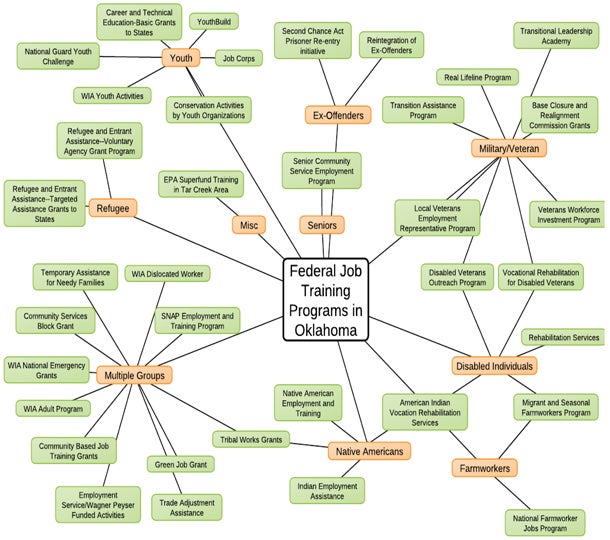Senate Investigation Uncovers Waste, Duplication in Job-Training Programs
Tray Smith /
Job training programs created by Congress have resulted in overlap and duplication, according to a new report from Sen. Tom Coburn (R-OK) that focuses on workforce development initiatives in Oklahoma.
Coburn used his home state as a case study for the effectiveness of federal job training efforts. His office found numerous examples of redundancy and complexity.
The state of Oklahoma maintains 40 different job training programs that are managed by nine state agencies and operated by more than 45 entities across 180 different physical locations. The costs add up to about $164 million a year.
As a result of the complexity and duplication in workforce development programs, a large share of resources is wasted in administrative costs, the report found.
The Southeast Workforce Investment Board budgeted only 14 percent of its $1.5 million budget for job training programs. For instance, the board budgeted $66,620 for administrative travel costs, compared to only $40,526 on dislocated workers.
The report builds on previous findings of inefficiencies in job training programs. The Labor Department inspector general found last year that the Job Corps, another training program, costs $76,574 per successful job placement.
Despite all of this government investment, the employers who would hire re-trained workers are unfamiliar with and disconnected from the workforce development system. The report found that 64 percent of Oklahoma employers say they are somewhat unfamiliar with the system, and 56 percent of state employers report that contact with system representatives occurs “never” or “seldom.”
In addition, job training often fails to place students in jobs related to the field in which they were trained. The report found that more than 500 Oklahomans have participated in green-skills training in the past year, but only 133 were placed in training-related employment.
Green-jobs training under President Obama’s stimulus bill was even less successful. The Labor Department inspector general found last year that, with 61 percent of the training grant periods having lapsed, grantees achieved just 10 percent of their job placement goals.
Coburn’s report recommends improving job training programs by empowering states to develop and manage their own workforce development systems with less federal interference, making sure money is spent on training instead of administrative costs, consolidating and refocusing federal resources, eliminating programs without metrics, and targeting those truly in need.
“Taxpayers are spending billions of dollars employing people in job training programs instead of training unemployed workers for jobs. Taxpayers should be appalled Congress has done nothing to reform these programs for more than 18 months,” Coburn said. “The report also shows that states are vastly more capable of managing job training programs than the federal government.”

